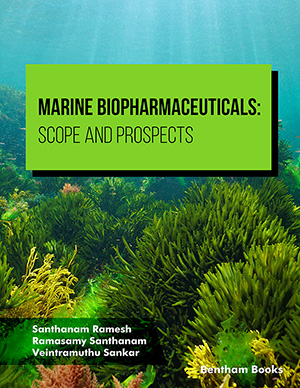Abstract
‘Iron chelation’ is widely understood as synonymous with non-specificity and viewed as a purely physicochemical mode of action, without any defined biomolecular target, broadly interfering with metalloenzymes. The 2-oxoacid-utilizing dioxygenases challenge this preconception. A family of non-heme iron enzymes that rely on chelation-dependent catalysis, they employ common molecules like Krebs cycle intermediates as endogenous iron chelators and consume atmospheric oxygen, inserting one of its atoms into cellular components. These enzymes control the adaptation of cells to hypoxia; the reversal of mutagenic DNA alkylations, the initiation of DNA replication, the translation of mRNAs; the production of extracellular matrix proteins like collagens and fibrillins; and numerous metabolic pathways: from the synthesis of the gibberellin growth hormones of plants, and the formation of carnitine, atropine, endotoxins, and cephalosporin antibiotics, to the breakdown of amino acids. Their pivotal roles in human pathology encompass oncogenesis and cancer angiogenesis, scarring and organ fibrosis, inherited diseases, and retroviral infections. Their unique catalysis, termed earlier the ‘HAG mechanism’ and known in subatomic detail, requires at least three different substrates to form three different products, and proceeds as a ligand reaction at the non-heme iron atom inside the active site pocket, without any direct involvement of apoenzyme residues. The apoenzyme sterically controls ligand access to the metal. The HAG mechanism-based concept of catalytic chelation directed by an apoenzyme, not merely by complexation parameters, has enabled knowledge-guided design of systemic and tissue-selective inhibitors, and of clinical trials. The HAG mechanism also lends itself to the development of novel, man-made biocatalysts.
Keywords: Non-heme iron, dioxygenase, drug design, prolyl 4-hydroxylase, cancer, fibrosis, hiv, cell cycle
Current Medicinal Chemistry
Title: The HAG Mechanism: A Molecular Rationale For The Therapeutic Application Of Iron Chelators In Human Diseases Involving the 2-Oxoacid Utilizing Dioxygenases
Volume: 10 Issue: 12
Author(s): Hartmut M. Hanauske-Abel and Anthony M. Popowicz
Affiliation:
Keywords: Non-heme iron, dioxygenase, drug design, prolyl 4-hydroxylase, cancer, fibrosis, hiv, cell cycle
Abstract: ‘Iron chelation’ is widely understood as synonymous with non-specificity and viewed as a purely physicochemical mode of action, without any defined biomolecular target, broadly interfering with metalloenzymes. The 2-oxoacid-utilizing dioxygenases challenge this preconception. A family of non-heme iron enzymes that rely on chelation-dependent catalysis, they employ common molecules like Krebs cycle intermediates as endogenous iron chelators and consume atmospheric oxygen, inserting one of its atoms into cellular components. These enzymes control the adaptation of cells to hypoxia; the reversal of mutagenic DNA alkylations, the initiation of DNA replication, the translation of mRNAs; the production of extracellular matrix proteins like collagens and fibrillins; and numerous metabolic pathways: from the synthesis of the gibberellin growth hormones of plants, and the formation of carnitine, atropine, endotoxins, and cephalosporin antibiotics, to the breakdown of amino acids. Their pivotal roles in human pathology encompass oncogenesis and cancer angiogenesis, scarring and organ fibrosis, inherited diseases, and retroviral infections. Their unique catalysis, termed earlier the ‘HAG mechanism’ and known in subatomic detail, requires at least three different substrates to form three different products, and proceeds as a ligand reaction at the non-heme iron atom inside the active site pocket, without any direct involvement of apoenzyme residues. The apoenzyme sterically controls ligand access to the metal. The HAG mechanism-based concept of catalytic chelation directed by an apoenzyme, not merely by complexation parameters, has enabled knowledge-guided design of systemic and tissue-selective inhibitors, and of clinical trials. The HAG mechanism also lends itself to the development of novel, man-made biocatalysts.
Export Options
About this article
Cite this article as:
Hanauske-Abel M. Hartmut and Popowicz M. Anthony, The HAG Mechanism: A Molecular Rationale For The Therapeutic Application Of Iron Chelators In Human Diseases Involving the 2-Oxoacid Utilizing Dioxygenases, Current Medicinal Chemistry 2003; 10 (12) . https://dx.doi.org/10.2174/0929867033457601
| DOI https://dx.doi.org/10.2174/0929867033457601 |
Print ISSN 0929-8673 |
| Publisher Name Bentham Science Publisher |
Online ISSN 1875-533X |
Call for Papers in Thematic Issues
Advances in Medicinal Chemistry: From Cancer to Chronic Diseases.
The broad spectrum of the issue will provide a comprehensive overview of emerging trends, novel therapeutic interventions, and translational insights that impact modern medicine. The primary focus will be diseases of global concern, including cancer, chronic pain, metabolic disorders, and autoimmune conditions, providing a broad overview of the advancements in ...read more
Cellular and Molecular Mechanisms of Non-Infectious Inflammatory Diseases: Focus on Clinical Implications
The Special Issue covers the results of the studies on cellular and molecular mechanisms of non-infectious inflammatory diseases, in particular, autoimmune rheumatic diseases, atherosclerotic cardiovascular disease and other age-related disorders such as type II diabetes, cancer, neurodegenerative disorders, etc. Review and research articles as well as methodology papers that summarize ...read more
Chalcogen-modified nucleic acid analogues
Chalcogen-modified nucleosides, nucleotides and oligonucleotides have been of great interest to scientific research for many years. The replacement of oxygen in the nucleobase, sugar or phosphate backbone by chalcogen atoms (sulfur, selenium, tellurium) gives these biomolecules unique properties resulting from their altered physical and chemical properties. The continuing interest in ...read more
Current advances in inherited cardiomyopathy
Describe in detail all novel advances in multimodality imaging related to inherited cardiomyopathy diagnosis and prognosis. Shed light to deeper phenotypic characterization. Acknowledge recent advances in genetics, genomics and precision medicineread more
 3
3
- Author Guidelines
- Graphical Abstracts
- Fabricating and Stating False Information
- Research Misconduct
- Post Publication Discussions and Corrections
- Publishing Ethics and Rectitude
- Increase Visibility of Your Article
- Archiving Policies
- Peer Review Workflow
- Order Your Article Before Print
- Promote Your Article
- Manuscript Transfer Facility
- Editorial Policies
- Allegations from Whistleblowers
- Announcements
Related Articles
-
New Treatments for Emerging Cystic Fibrosis Pathogens other than Pseudomonas
Current Pharmaceutical Design Progresses in TCM Metal-Based Antitumour Agents
Anti-Cancer Agents in Medicinal Chemistry Diagnostic Capabilities of MRI Versus 18F FDG PET-CT in Postoperative Patients with Thyroglobulin Positive, 131I-negative Local Recurrent or Metastatic Thyroid Cancer
Current Medical Imaging Cytostatic and Apoptotic Effects of DNMT and HDAC Inhibitors in Endometrial Cancer Cells
Current Pharmaceutical Design P2Y Receptors: Focus on Structural, Pharmacological and Functional Aspects in the Brain
Current Medicinal Chemistry Preparation and Quality Control of <sup>111</sup>In-Plerixafor for Chemokine Receptor CXCR4
Recent Patents and Topics on Imaging (Discontinued) Arsenic-exposed Keratinocytes Exhibit Differential microRNAs Expression Profile; Potential Implication of miR-21, miR-200a and miR-141 in Melanoma Pathway
Clinical Cancer Drugs Identification of AHSA1 as a Potential Therapeutic Target for Breast Cancer: Bioinformatics Analysis and <i>in vitro</i> Studies
Current Cancer Drug Targets Adolescents Attitudes Toward Vaccinations: A Systematic Review
Current Pediatric Reviews Design, Synthesis and Evaluation of Chalcone Derivatives as Anti- Inflammatory, Antioxidant and Antiulcer Agents
Letters in Drug Design & Discovery Recent Patents in Pulmonary Delivery of Macromolecules
Recent Patents on Drug Delivery & Formulation Molecular Signature of HPV-Induced Carcinogenesis: pRb, p53 and Gene Expression Profiling
Current Genomics Prothymosin α and its C-Terminal Immunoreactive Decapeptide Show No Evidence of Acute Toxicity: A Preliminary <i>In Silico</i>, <i>In Vitro</i> and <i>In Vivo</i> Investigation
Current Medicinal Chemistry Biological Effects, Total Phenolic Content and Flavonoid Concentrations of Fragrant Yellow Onion (Allium flavum L.)
Medicinal Chemistry Effects of Tobacco Nicotine-Derived Nitrosamine Ketone (NNK) Exposures on Brain Alcohol Metabolizing Enzyme Activities
Drug Metabolism Letters The Biological Role of mTOR in the Pathogenesis of Solid Tumors: An Overview
Current Enzyme Inhibition Applied Proteomics in Companion Animal Medicine
Current Proteomics Central Sensitisation Phenomena in Primary Headaches: Overview of a Preventive Therapeutic Approach
CNS & Neurological Disorders - Drug Targets Branched Disulfide-Based Polyamidoamines Capable of Mediating High Gene Transfection
Current Pharmaceutical Design N-Succinyl Chitosan as Buccal Penetration Enhancer for Delivery of Herbal Agents in Treatment of Oral Mucositis
Current Drug Delivery























